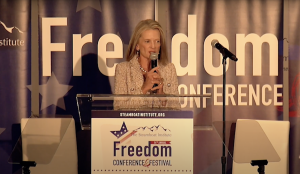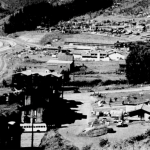Vail Survey: Residents seek action on housing, parking and Vail Resorts relationship
The biennial community survey offers insight into town priorities, strengths and weaknesses

Chris Dillmann/Vail Daily Archive
Earlier this spring, the town of Vail launched a community survey to take the pulse of those that live and work in town. Just under 1,500 residents, property owners, business owners and employees responded to the biennial survey, creating list of priorities, areas of improvement and successes for Town Council and staff to evaluate.
Chris Cares, the founder and managing director of market research firm RRC Associates, presented the Town Council with a high level overview of the data collected in the survey including nearly 11,000 pages of written responses and comments.
“The comments are really rich, and I think that’s one of the things that distinguishes the survey you do, compared to some other communities where there’s a lot of emphasis put on the statistical ratings and not much opportunity for the community to engage,” Cares said. “I think your history of repeated studies like this and you providing this opportunity for input sets you apart and it also has put a premium on our trying to make those comments available.”
Overall, the town saw a 9% increase in participation from the last 2020 survey. Particularly, Cares noted increased participation from “younger people and renters,” as well as newcomers to the town, as defined by those that have lived in the town for less than a year. The town also saw a 6% increase among those who have lived in the town for over 15 years.
Primarily, respondents reported living in East Vail (21%) and North of I-70 in West Vail (19%); with Potato Patch/Sandstone (12%), Vail Village (8%), Intermountain (7%) and Buffehr Creek, Lionsridge and the Valley (7%) trailing behind. The majority of respondents reported owning their Vail residence (87%), with 13% reporting being renters in the town.

Support Local Journalism
While respondents across all age ranges participated in the survey, the majority reported being between 45 and 75 years of age.
The last time the town conducted the community survey was in 2020, just ahead of and at the onset of the pandemic. In the 2022 iteration, the town asked about respondents’ satisfaction with how COVID-19 was handled.
Overall satisfaction with the handling of COVID-19 precautions and information was high, with 73% stating town’s efforts to address the health and emotional needs of the community were excellent or nearly excellent (ranked as a 4 or 5 on a 5-point scale) and 61% satisfied with the handling of the community’s economic needs.
However, Cares told the council that while this data was favorable, COVID-19 likely impacted a lot of satisfaction ratings on other matters.
“The carryover from these COVID opinions — that we’ve all been experiencing in the last two years — helps to explain some of the changes that we’re going to see in your data. It also affects a lot of the other matters of delivering services and those kinds of things,” Cares said, later adding that “you’ve got some challenging issues that are driving response in addition to just COVID, but I think COVID is a huge part of what’s dampened the sentiment; and we’ve seen that in other places, everyone is feeling that.”
Specifically, the town saw decreased satisfaction with town services and facilities — and even more specifically, community development, crowding on bus and parking services — which could likely be attributed to COVID-19 as these departments were impacted by pandemic-related restrictions and challenges.
Right or wrong direction?
One of the first questions that respondents of the survey were asked was whether the town was heading in the right direction or whether it is heading down the wrong track.
The results show that 37% of respondents feel Vail is on the “wrong track,” up from 24% in 2020. About 44% of respondents said the town is going in the “right direction” (down from 57% in 2020). Additionally, respondents were given the opportunity to give comments on why they responded the way they did.
For those who felt the town was on the right track, Cares said the data showed that the town’s new leadership, incremental housing actions and efforts to address the environment, climate and sustainability were evidence of their perceived positive direction of the town.
Other areas of positivity — as noted through department and services satisfaction ratings — included the Vail Public Library customer service and facilities, cleanliness of pedestrian villages, snow removal on roads, and the fire department staff and response.
According to Cares, these written responses identified that the top three concerns of those that said the town was on the wrong track were: housing, parking and references to Vail Resorts.
These responses align somewhat with what all respondents reported were there “highest priorities” of the town. The top five priorities were identified as housing for resident-occupied and deed-restricted households, actions to protect wildlife habitat, actions to protect and enhance Gore Creek, evaluating impacts of short-term rentals and defining comprehensive parking management policies.
Housing
The survey asked respondents a number of questions related to housing. When asked specifically about whether the town and Vail Local Housing Authority were on the right or wrong path for addressing housing for year-round residents, responses were mixed. While 42% responded that the town was on the right track, 21% reported “wrong track,” and a large percentage (31%) reported having no opinion or not knowing enough about what the town was doing for housing.
Additionally, respondents were asked to rank their level of support for a number of opportunities to increase housing on four-point scale. The top opportunities were reported as acquiring and setting aside land for future resident-occupied housing opportunities (with 55% reporting being very supportive); allowing increases in density to facilitate the development of accessory dwelling units for resident-occupied housing (38% very supportive); and adopting an amnesty program to allow for legal conversion of currently non-permitted dwelling units such as lock-off units (37% very supportive).
The survey also aimed to get some answers on the relationship between short-term rentals and long-term rentals, starting with asking owners who rent which group they rent to. Of those that rent their home, 12% report renting long-term and 23% report renting short-term (a 5% increase from the 2020 survey results).
Interestingly, however, 40% of respondents reported that the loss of long-term rental housing in Vail was a “critical problem in the region.” This answer was up 20% from the 2020 survey. Even more, 27% reported that it was “one of the more serious problems” and 20% that it was a “moderate problem.”
Further, RRC Associates provided the town with a list of written comments separated by responses for those that responded right and wrong track. Within this, even those that fall on the right track identified housing as an area to continue working on, but that the town was making the right steps forward.
Responses included a need for “continued focus on employee/affordable housing;” stating that the town was “forward-thinking, resident-minded but slow to address employee housing;” and that “housing is always a difficult topic.”
For those who responded that the town was on the wrong track, respondents urged the town to do things like, “Develop and make available significantly more worker housing! Step up instead of expecting it all to be developed down valley. Vail and Vail Resorts cannot be successful without an adequate workforce — no matter what else you do.”
Others offered specific examples of workforce housing improvements, such as a need for “low cost, small homes/units for local residents to live and work here” as well as zoning the town as high-occupancy housing and focus on seasonal employees.
These responses, Cares said demonstrated that the “efforts you’ve put into topics to housing in general and how the available housing stock is being used, not only here but downvalley, are certainly appropriate.”
Parking

Chris Dillmann/Vail Daily Archive
With parking identified as an area for improvement in the town, a number of questions attempted to identify specific parking needs.
Overall, the rankings for “satisfaction with public parking services in Vail” demonstrated average satisfaction — when ranked on a five-point scale — across a number of areas. Safety of overflow frontage road parking received the lowest satisfaction (2.6 on average), with convenience and ease of access to this parking (2.7 on average) and ease of parking in winter (2.8 on average) close behind. Compared to the 2020 averages, each of these areas saw a decline in satisfaction.
The question also asked about overall parking fees and structures, with a 3.2 score for satisfaction — the same average the category had in 2020.
On the open-ended answers, some “right track” respondents also reported parking as an area in need of further improvement. Responses included:
- “Community planning generally good, services good but parking situation is in very bad shape.”
- “Excellent job with mass transit, bicycle/hiking trails as well as retail + restaurant experience. Some improvement for parking options during ski season should be considered.”
- “Except for parking issue winter and summer the town is great
For those that fell under the “wrong track” group, respondents reported things like:
- “Not enough parking and too many people in town. The parking on frontage road this year was too much.”
- “Crowding on the ski mountain and an influx of visitors have overloaded the town’s infrastructure, especially parking, making it virtually impossible to go into town and park for any reason.”
- “For over 35 years the skier parking situation has not been resolved. The Town and Vail Resorts need to move on the solution and stop the overflow parking on the Frontage Roads.
This winter, the town did see an increase in overflow parking on the frontage roads, which it is seeking to address as part of its restructured Vail Parking and Mobility Task Force.
Vail Resorts

Chris Dillmann/Vail Daily Archive
On both employee housing and parking — as well as other topics and issues — many of the open-ended responses call for action from both the town of Vail and Vail Resorts.
“The relationship between TOV and Vail Resorts has gotten off track. Vail Resorts has too much power and too little responsibility,” one respondent wrote.
“The Town of Vail has got to start pushing back against Vail Resorts. I grew up going to Vail, lived in Vail and it angers and disheartens me to see what has happened to our once beloved town. No young locals can start businesses there and carry on the feeling of community,” another wrote.
The survey did ask respondents directly about this issue, inquiring how important it was to encourage collaboration between the town of Vail and Vail Resorts on a number of topics. For workforce housing, parking and guest experience respondents overwhelmingly said it was extremely important — with 91%, 91% and 84%, respectively. The survey also asked about collaboration on marketing, under which there was strong, but lesser emphasis on extreme importance (58%).
For those respondents who entered comments on this question, remarks reflected concerns on bring back “the fun and less serious attitude,” as well as capacity trail density, COVID safety, crowd control and crowding on the mountain, employee compensation, treatment and experience, conservation and more.
These responses on the importance of collaboration come as the town’s relationship with the corporation has gotten terser with the town’s recent condemnation vote of an East Vail parcel on which Vail Resorts has announced its intention to build housing.
In RRC Associates’ overview of the results, it mentions this recent disagreement, stating, “it is unclear how the responses on collaboration would look at this time, but it is notable that there were already significant concerns for the Town/VR relationship prior to the most recent controversy.”
The survey results provide a good baseline for community sentiment, as well as some creative ideas to solve some of the town’s challenges, and the Town Council members and staff expressed their intentions to use these results to drive the town forward in a positive direction for all.
“We think the survey provides a strong tool for listening to the community and there’s a wealth of input,” Cares said. “I do think that this tool sets up an ability to look at priorities and relative areas that can be emphasized and will be of really broad, popular support versus areas where there may be relatively less support, and some ways to sort out some of the clutter that you may hear on the street or from a relatively small segment sometimes in community meetings.”
Mayor Kim Langmaid — reiterating closing comments of many council members — expressed a desire to continue to sift through the thousands of comments and data points.
“There’s still some work to be done in terms of sifting through the information, identifying — we know what those larger priorities are — but some of the more unique pieces of input there that we can act on in addition to what we’re already doing,” she said.











